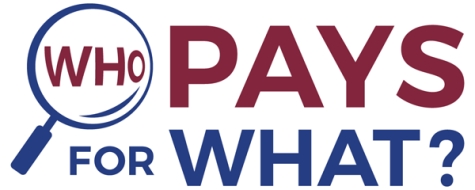Trainer and consultant Mike Anderson’s idea wasn’t new, but his implementation of it has had some significant impact for the industry.
In 2015, Anderson, of Collision Advice, wanted to resurrect a type of report he remembered finding helpful years earlier when he still owned a pair of auto body shops in Virginia.
“For many years when I owned my shops, I looked forward to a report one of the industry publications produced that showed what not-included labor procedures shops were billing for, and which of the largest insurers were paying for those procedures,” Anderson said. “That publication was long gone in 2015, so I decided to take their basic idea and expand on it.”
Rather a single survey asking about a couple dozen labor procedures, Anderson worked with industry publication CRASH Network to create four different quarterly surveys that in total would ask about billing and payment practices for about 100 not-included procedures and estimate line items.
“I knew if enough people participated, we could accomplish several things,” Anderson said. “Even just taking the surveys would serve as a reminder to those shops about the not-included items they were doing and could potentially be paid for. And the findings would help reassure shops that despite what they might be told, they aren’t ‘the only one’ charging for those items.”
Anderson’s first “Who Pays for What?” survey launched in April 2015, and industry interest in the project was immediately clear. More than 980 shops, from all 50 states, participated in that first survey, which focused on not-included refinish labor operations.
“I’ve talked to a lot of people who have done surveys in this industry over the decades, and no one has had anywhere close to that level of participation,” Anderson said. “We knew we’d tapped into something shops were hungry for.”
That appetite hasn’t diminished. Each survey since has received response from 500 to more than 1,000 shops, and a total of more than 5,000 shops have taken one or more of the quarterly surveys over the years they’ve been conducted.
What have been some of the changes the surveys have found---or contributed to---over that time? For many of the procedures asked about in the surveys, a higher percentage of shops say they are seeking payment when the procedure is necessary---and a higher percentage say they are being paid regularly.
The surveys also have found a steadily rising percentage of repairers are going directly to the automakers' websites to research needed OEM repair information. In 2015, just 32% of repairers responding to the "Who Pays for What?" survey said they used the automakers' websites to obtain repair information. That percentage has since doubled.
The reports detailing the survey findings include Anderson’s insights into the need for the various procedures, along with links to various resources to help shops understand---and explain to insurers or customers---how the procedures fit into a complete and safe repair.
“It’s clear from these surveys that whether or not a shop is paid for a particular procedure depends to some degree on whether or not the shop negotiates for it,” Anderson said. “Though this can vary by insurance company, DRP status or region of the country, the surveys show that while none of the procedures asked about are universally paid for by insurers, none are universally rejected either. There are many examples in the surveys where nearly three out of four shops report getting paid all or most of the time for a certain procedure, yet another 20 or 30% of shops say they have never charged for it. That’s something we’re trying to change.”













